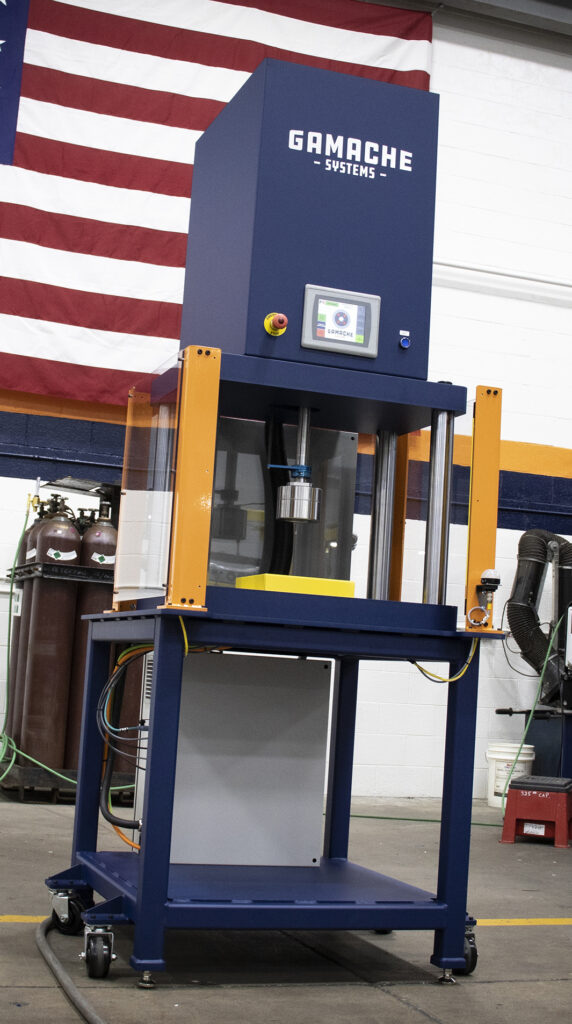 As a systems integrator, Mike Gamache gives us a general idea of the distinction between automation and robotics.
As a systems integrator, Mike Gamache gives us a general idea of the distinction between automation and robotics.
I define automation as any kind of system or machine that can be designed to perform a task that is difficult for a worker or something a worker can’t physically do. In a sense, a CNC machine tool is a form of automation. Industrial robots would fall within the definition of automation as an arm articulated by any number of servomotors that can perform tasks such as machine tending, welding, material handling, plasma cutting, and various other tasks.
I would assume the majority of your customers have little or no experience with these technologies and that meeting their needs requires a ground-up system design approach.
That probably describes about 80 percent of our new customers. They’ve realized it’s time to streamline their operations and cut costs by increasing efficiency, so we’ll begin by having a conversation or a meeting to discuss their goals and see what we have to work with. That’s when we really start to closely examine what needs to be done; how it’s currently being accomplished, and what improvements could be made using best-in-class technologies combined with Lean manufacturing principles. Our primary partners are Fanuc robotics, Rockwell Automation, and for CNC machine tending we use Lang Technovation for workholding. We actually have quite a list of longtime vendors that provide components and subcomponents that contribute to the systems we design, and knowing that we have confidence in those components helps our customers become more confident in automation. Once a system is designed and built, our engineers have to program the “brains” of the system. This is another area that you have to create confidence with the customer by making things user-friendly and easy to maintain. When it’s all ready, we install and provide training for the customers to create the final level of confidence and trust in our system and in ourselves as systems providers. We follow the customer’s lead in terms of how far they’d like to go. Sometimes all-new equipment is what is required to create the desired results, while other projects only call for adding a robot for tending an existing machine or press. Just think of what a difference a system utilizing robotics can make in a facility with workers that are performing mundane, repetitive tasks like machine tending or skilled tasks like welding and assembly. The economic, and ergonomic, benefits can be found at every turn.
 Apart from design, what other benefits does a systems integrator provide?
Apart from design, what other benefits does a systems integrator provide?
One of the biggest challenges manufacturers are facing right now is how hard it is to find machine operators and skilled labor. And when you can, you don’t want to waste their time on dull, monotonous tasks. That’s when a robot is particularly effective at addressing unattended machine time, but first you need someone who can evaluate and balance material weight, arm reach, functions to be performed, and the level of technology required for the task in order to make a smart equipment investment.
In addition to collaborating with the customer throughout the design process, we guide them through the hardware and software that’s currently on the market. New technologies are constantly being introduced, and can appear quite attractive, but sometimes it’s best to let it spend a little more time on the industrial proving grounds before writing out that PO. But once all the decisions have been made we will handle all the equipment installation and testing, we’ll provide complete staff training, and then technical and maintenance support from that point forward. And continuing conversations, as well, because we’ve found that once a manufacturer gets that first taste of how much automation improves their operations, they’re eager to learn more about what else is out there, and the options are virtually limitless.
Is there anything else particularly interesting you see out there on the horizon in your line of work?
Continuing on the theme of addressing unattended machine time is the concept of “machine tending,” which extends to plasma cutting, flame finishing, CNC machining, and many more processes. In fact, RoboTrex, utilizing a Fanuc robot and Lang vises, is a unique CNC machine tending solution that is described as more than just a robotics parts handling system, but a pre-engineered, next-gen, systematic approach to reducing cost within your machine operations. So there’s constantly something new to keep a lookout for.



















